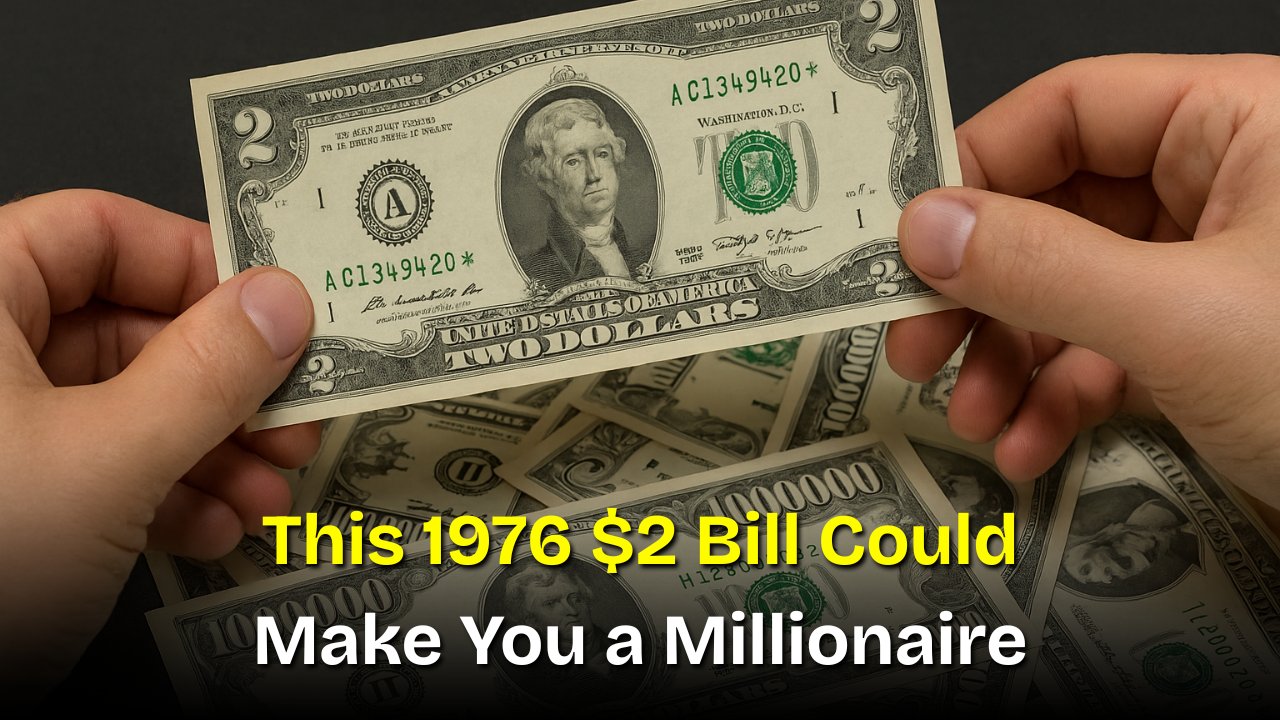1976 $2 Bill – Many people may not realize that a simple 1976 $2 bill could be hiding extraordinary value. While most of these bills were produced in large numbers and continue to circulate at face value, certain rare variations, unique errors, and pristine conditions can make them worth thousands or even millions of dollars to collectors. The 1976 series of $2 bills was special because it marked the return of the denomination after a long pause, and it was released on the nation’s Bicentennial year, making it historically significant. Collectors often look for specific features like misprints, star notes, or bills that have never been in circulation. For those who have kept an old $2 bill tucked away in a wallet, book, or family keepsake, it may be time to check its details carefully. With the right combination of rarity and demand, that simple note could transform into a life-changing treasure, proving that sometimes the most unexpected things hold immense value.
Why the 1976 $2 Bill Is Special
The 1976 $2 bill stands out because it was reintroduced during the United States Bicentennial, marking 200 years of independence. Instead of the traditional back design, the bill featured a depiction of the signing of the Declaration of Independence, making it more of a collector’s piece than just everyday currency. While billions were printed, only a fraction remain in mint condition, and those are highly sought after. Bills with unique serial numbers, star notes, or printing errors can dramatically increase their worth. Some even became souvenirs when post offices stamped them on April 13, 1976, the day of release, to mark Thomas Jefferson’s birthday. These commemorative bills often sell at a higher value today, especially when kept in pristine condition. Understanding these historical and collectible factors helps explain why certain 1976 $2 bills are valued far beyond their face amount.
Factors That Determine Value
Several factors influence the worth of a 1976 $2 bill, and knowing them can make the difference between spending it at face value and cashing in on a collector’s jackpot. First, condition is everything—uncirculated bills with crisp paper and no folds are far more valuable than worn ones. Second, errors such as misaligned printing, ink smudges, or double impressions are considered rare and can make a note worth thousands. Third, star notes, which replace bills that had defects during production, are much rarer and usually worth more. Additionally, bills with unique or repeating serial numbers (like 00000076 or 12345678) are extremely valuable to niche collectors. When all these factors combine, the price of a single $2 bill can skyrocket. This is why experts often recommend checking old bills carefully before assuming they are worth only face value.
How to Check If Yours Is Valuable
If you have a 1976 $2 bill, the first step is to inspect its condition closely under good lighting. Look for crispness, no folds, and bright ink, as these are signs of higher value. Next, examine the serial number; unique patterns or historically significant digits can raise the worth. Check for a star symbol at the end of the serial number, as star notes are rare replacements. It is also worth looking for misprints, off-center seals, or unusual ink marks, which often make collectors eager to pay premium prices. Another important detail is whether the bill was stamped at a post office on the release day in 1976, since those carry additional collectible value. Finally, consulting a currency appraiser or checking online auction sites can give you an accurate idea of the market price. A bill sitting unnoticed in your wallet or drawer could turn out to be worth thousands, or even millions, if it checks all the right boxes.
Where to Sell a Rare $2 Bill
Once you discover that your 1976 $2 bill has rare or unique qualities, you may want to turn it into profit. Selling options include coin and currency dealers, who specialize in authenticating and purchasing rare notes. Online platforms such as eBay, Heritage Auctions, or other numismatic auction houses can also connect you with collectors willing to pay premium prices. It’s important to have your bill professionally graded and authenticated before selling, as this significantly increases buyer trust and value. Local coin shows and collector events are also great opportunities to showcase your rare find. Some banks may also provide guidance, though most won’t purchase beyond face value. For maximum profit, timing the sale when interest in collectible currency is high can also make a difference. Whether through an auction or private sale, turning a simple $2 bill into a life-changing sum is possible if you connect with the right collector.
